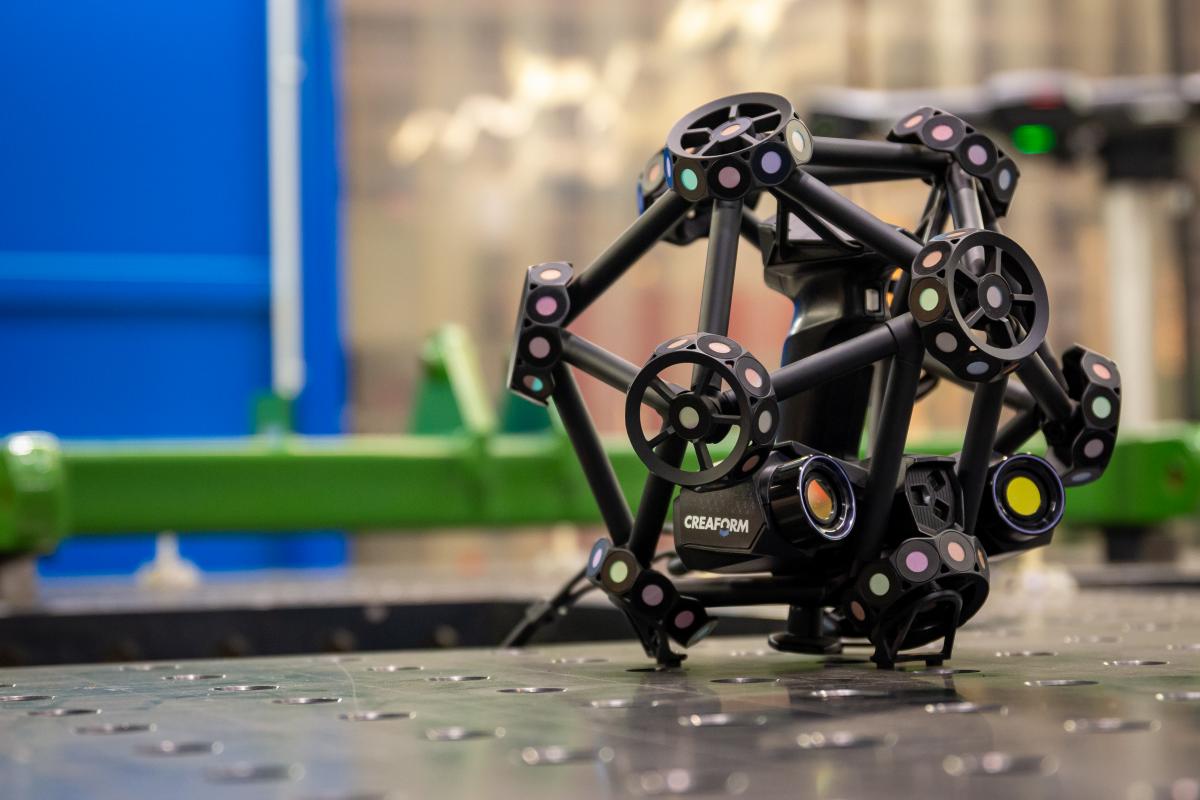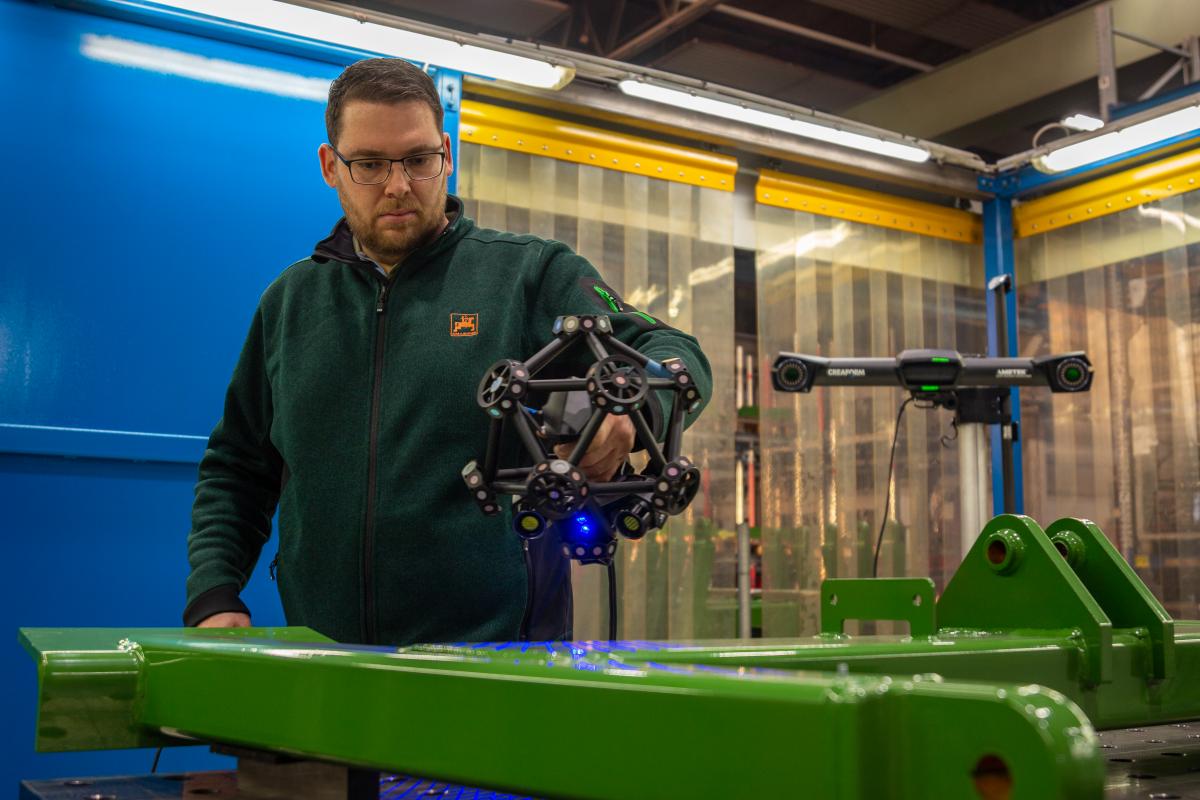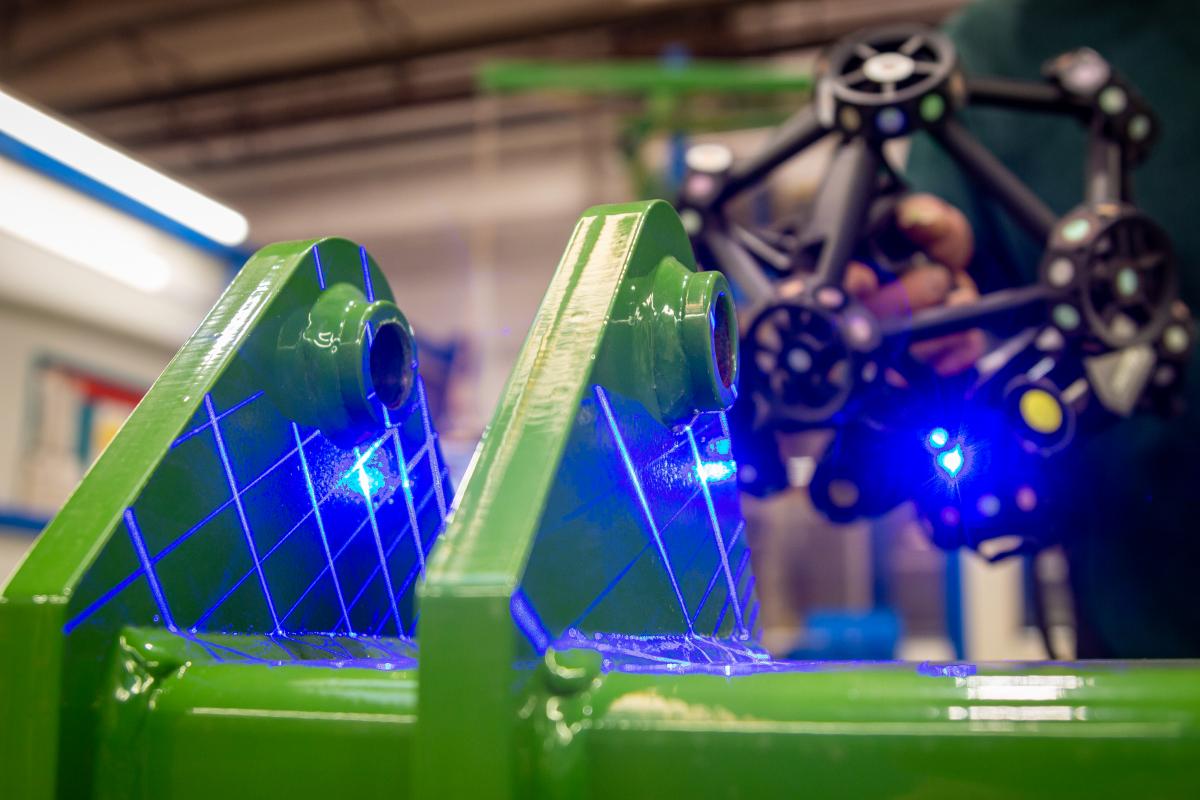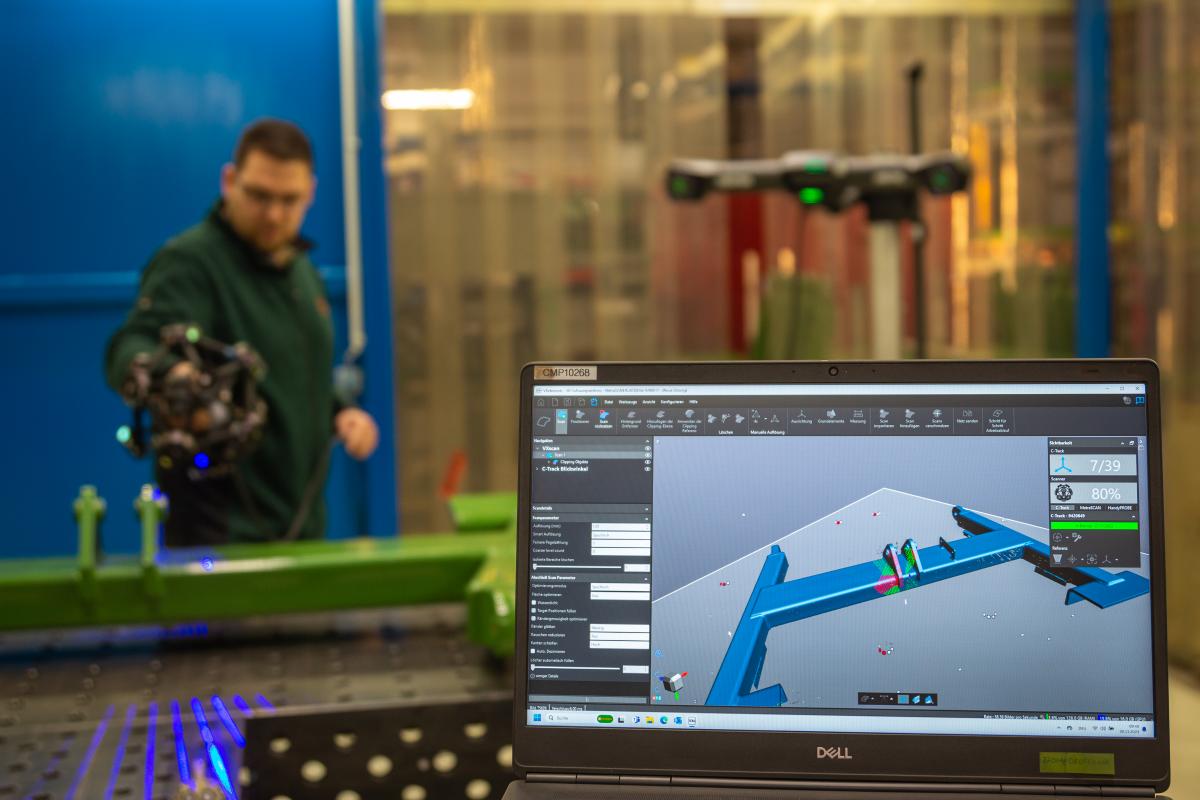Exit this form
Are you sure you want to quit this form?
In the face of growing global demands, modern agriculture is tasked with the dual challenge of providing intelligent crop production and ensuring a sustainable food supply. To meet these demands, farmers must rely on high-quality agricultural equipment that enables efficient tillage and fertilization. However, the large size of farm machinery and the industrial environment in which it is produced pose serious challenges to its quality control (QC).
Inspecting large parts and assemblies often requires extending the reach of the measuring device. Conventional technologies, such as measuring arms, have physical limitations that necessitate leapfrogging to expand their measuring volume, making the QC process more laborious. Indeed, the more leapfrogs there are, the more the volumetric accuracy deteriorates, and the longer it takes to complete the QC process, especially with measuring arms that must be repositioned at each step.
Consequently, manufacturers of large agricultural machinery must opt for 3D measuring equipment that does not require leapfrogging to save time in their QC process. In addition, they must pay close attention to the specified measurement accuracy and certification acceptance tests.
Is it possible to marry high measurement accuracy with the harsh conditions of industrial environments?
A robust, sturdy, and durable measuring system is necessary to handle the harsh conditions of industrial environments. Whether for inspecting in-house produced assemblies or third-party supplier parts, such as swing arms, rames, drawbars, or rollers, manufacturers must be able to rely on a powerful, highly accurate system engineered to measure directly on the production floor.
Is it possible to increase inspection efficiency while maintaining the high-quality standards customers expect?
When an old measuring system becomes expensive to repair and slows down measurement speed, limiting the team's capacity to complete its workload, it's time to look for a more suitable 3D measurement system. However, some manufacturers may be concerned about abandoning a system they are accustomed to working with. Others may also be reluctant to invest in new technology if they are not assured of receiving all the necessary customer support. Fortunately, suppliers of 3D scanning technology are well aware of customers' hesitation and are ready to support them throughout the transition process, ensuring they achieve the best possible results.
This is where Creaform steps in.
Accuracy: Metrology-grade 3D scanners have the required measuring volume to capture large parts, without requiring multiple scans or leapfrogging. Featuring dynamic referencing and integrated photogrammetry, they are designed for use on the shop floor, offering measurement accuracy insensitive to environmental instabilities. Large farm machinery can be inspected directly on the production floor, resulting in faster QC processes.
Speed: With optical 3D scanners offering fast measurement speed, the entire measuring process and data collection become much quicker, particularly for large parts and assemblies. As a result, QC and quality assurance (QA) teams can complete their workload in time and without limitations.
Versatility: Blue laser 3D scanners master various complex and contrasting finishes with no surface treatment required. Their data acquisition proficiency is particularly notable with reflective materials. They offer better performance and better readings than any other measuring solution available on the market.
Simplicity: Inspection software with an intuitive interface is accessible, easy to learn, and simple to integrate and operate. This means anyone can participate in the measuring process, regardless of expertise or experience level.
Metrology-grade 3D scanners, such as the MetraSCAN 3D and inspection software like VXinspect and PolyWorks, are good examples of such accurate, fast, versatile, and easy-to-use 3D scanning solutions.

The unmatched speed and versatility of 3D scanners contribute to reducing the inspection time of large parts and assemblies, which impacts the overall efficiency of the QC process.
Using a 3D measuring device that does not require leapfrogging, the company has reduced the inspection time for large parts and assemblies. This has made the entire measuring process, including data acquisition and analysis, significantly faster. As a result, the company is now more prepared to respond to new production challenges and improve its incoming inspection and production controls.

Used as a large measuring station directly in the production area, the 3D scanner can measure various surfaces, whether painted, cut, sandblasted or fired, with no surface preparation required. More importantly, this flexibility does not compromise measurement accuracy.

The implementation process was simple as the manufacturer had prior experience with Polyworks from their previous measuring system. Using the same metrology software, they could compare the parts and assemblies with the corresponding CAD models. Additionally, the unmatched support provided by the vendor made the onboarding process smooth and hassle-free.

A detailed mesh of a large part appears in real-time on a computer screen while an engineer is scanning it with the MetraSCAN 3D.
Amazone is an independent family business that has been developing and producing high-quality agricultural machinery and equipment for over 140 years. Headquartered in Osnabrück, Germany, the company has become one of the world's leading manufacturers in the farming industry.
Today, the company's core competencies include active and passive tillage technology, precision seed drills, fertilizer spreaders and crop protection sprayers. With nine production locations and over 2,000 employees, Amazone considers modern and cost-effective arable farming methods when designing its machinery, thereby genuinely contributing to its customers' operational success and growth.
To maintain high-quality standards, Amazone has been using 3D measuring technology for over a decade. The company uses this technology to inspect parts produced both in-house and by third-party suppliers. The QA team conducts daily production checks in the welding shop, focusing on inspecting welded assemblies and their fixtures.
Recently, the QA team replaced their old measuring arm with the MetraSCAN 3D and noticed a significant increase in the measurement speed. The new system has made the entire measuring process and data collection much more straightforward, particularly when measuring large parts and assemblies.
"Compared to our old system, we have become significantly faster. The entire measuring process and data collection have become much easier. We are now more prepared to respond to new production challenges as well as improve our incoming inspections and production control," says Stefan Albrecht, Metrologist at Amazone. "For us, the future lies in using the MetraSCAN 3D from Creaform."